Locomotives in the scrapyard
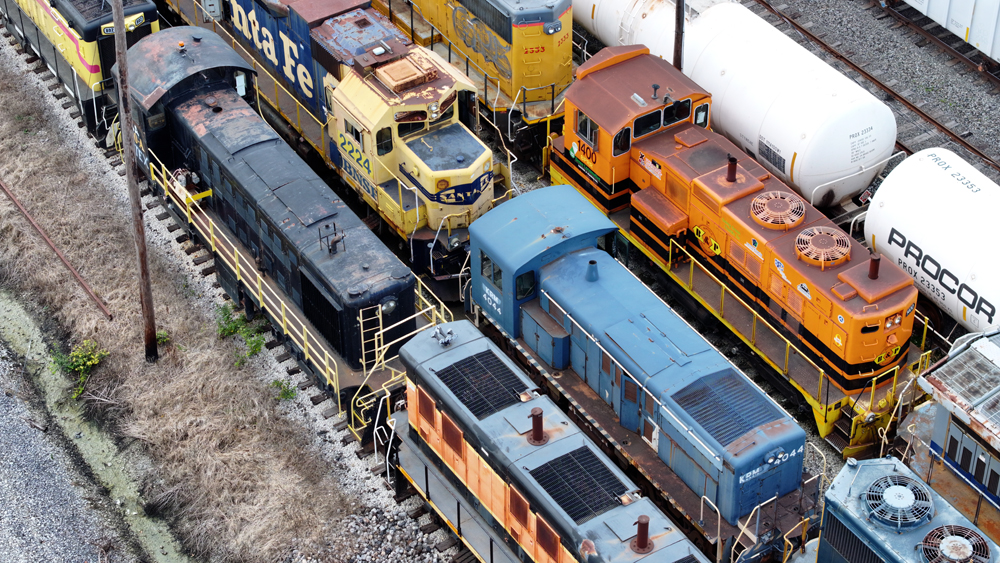
Sitting switchers
The switcher is a rapidly-dying species on American railroads. Pushed out of yard duties on the Class I railroads by demoted road units (like ex-BNSF No. 2224, at top), they soon became most noticeable on industrial sites, switching cars for grain elevators and warehouse complexes. However, the proliferation of the Trackmobile, along with the rapidly increasing age of the average switcher, has sent these units to the dead lines in droves. LTEX has almost 100 units on property, from a variety of owners and builders. That can be most aptly illustrated by this scene, where three switchers of vastly different pedigree are side-by-side-by-side at the end of their working lives.
At left, CRGX No. 8000A is a rebuilt Alco S4M, and served its last duty at the Cargill elevator in Lima, Ohio — a fact that is marked on the cab sides in such large print it is often mistaken for a reporting mark. Built for the Erie Lackawanna as No. 528 in October 1952, this engine was sent off to the scrapper some time after 2020. Recent images of the location show that it was replaced by an LTEX GP15-1.
In the center, Kentucky Railway Museum No. 4044 is a 1954-built Baldwin RS4-TC. These units were built exclusively for the U.S. Military, with 74 going to the Army, and eight (the 4044 being the last) delivered to the U.S. Air Force. In the 1980s it, along with most RS4-TCs, were extensively rebuilt with Caterpillar motors, EMD control stands and electrics, and new trucks. After ending up at the Kentucky Railway Museum along with fellow unit No. 4010 in the early 1990s, the locomotives worked there until the mid-2010s, when they were rather quietly disposed of. Since 2018, both units have remained on LTEX property.
Finally, at right is the rarest locomotive of the three. Buffalo & Pittsburgh No. 1400 is one just four Brookville GS1400 locomotives built. Originally a 1949-built EMD NW2, it served the Rock Island; Rockdale, Sandow & Southern; and Galveston Railroad before owner Genesee & Wyoming sent it to Brookville Locomotive in 2009 to be rebuilt as a genset. Two other locomotives would follow — an additional unit for the B&P, and one for Ohio Central. However, due to the general failure of the genset concept, no further units were built. While the disposition of B&P No. 1401 is unknown, No. 1400 has been at LTEX since at least 2023, along with OHCR 1402.
Variety in the end
LTEX takes in a wide array of locomotives. At direct center is BNSF No. 912, stripped of its numberboards and horn. Like many of the other ex-BNSF locomotives at LTEX, it has been retired due to age — the GE Dash 8 locomotives being less suitable for rebuild than the newer Dash 9s.
At right, a row of gensets and switchers trails into the distance, with BNSF No. 1265 closest to the camera. Gensets have been quickly relegated to the scrap lines due to unreliability, while switchers such as LTEX No. 802 and CRGX No. 8000A have been sent away for disposal primarily due to age.
At left, a surprising sight is the form of three EMD F units slowly decaying in the sun. Castoffs from the Adirondack Railway, sold off in 2023, each one is a different kind of F unit, each with distinguished pedigree. Closest to the camera is No. 2007, a former Metro-North FL9. Sold to the railroad as a parts unit, it was nevertheless returned to service in 2015. In the center is F7A No. 1508. Originally built for the Alaska Railroad, it was sold to a private owner and was leased to the Massachusetts Central Railroad in the mid 1990s. It served several years with the MCER and later the Adirondack in its blue and yellow ARR livery, before receiving a repaint into a New York Central-inspired scheme in the early 2000s. The locomotive ran for almost 20 years before being put into storage sometime before 2020, still retaining its Alaska-spec snowplow. Finally there is FP10 No. 1502. Rebuilt by the MBTA out of a GM&O F3A, the engine was purchased from Metro-North in 2003, along with four FL9s, including No. 2007. According to photos online, the 1502 was running through 2020, with the reason for its withdrawal and sale unknown.
Finally, in the distance, a line of multicolored switchers can be seen. While the provenance of the black unit can clearly be seen as the Illinois Central, the others are far more interesting. In early 2024, LTEX took in a great many units from National Rail Equipment — seemingly all from their storage tracks in Paducah, Ky. Included in this were almost a dozen EMD SW1001s originally sold to the South Korean state rail operator Korail between 1969-1971. These units were repatriated to the U.S. in the 2010s by NRE, with some rebuilt and the rest stored. These stored units are now at LTEX and may be rebuilt for future use.
An abundance of fallen flags
The sheer breadth of LTEX can be seen in this photo. Locomotives stretch out in all directions for almost a square mile, and just about every major operator in the country is represented. In the foreground alone, engines painted for Pan Am Railways, Union Pacific, the original Genesee & Wyoming, BN, Santa Fe, Canadian Pacific, CSX, and Southern Pacific all intermingle in the seemingly endless yard.
For some, the end. For others, a new beginning
LTEX is not merely a scrapyard, but is also a leading provider of leased locomotives and locomotive rebuilds. The locomotives parked outside of the buildings in the direct foreground and in the far background are currently being rebuilt or reconditioned for future service with LTEX’s lease fleet or with a customer. “Small” engines are the name of the game at current, with many of LTEX’s customers being industrial concerns like grain elevators or short lines that still need GP- and SW-series locomotives.
In the midground of the photo, larger six-axle locomotives can be seen lined up for scrap. As the class 1 carriers reassess their motive power needs, many older, unreliable locomotive types, such as the EMD SD60I, SD50, and the GE Dash 8 series, are being cut up.
When preservation fails
Nestled amongst the modern freight locomotives, four locomotives immediately stand out.
At the bottom of the image is SLRG No. 518. Operated by Iowa Pacific through it subsidiary San Luis & Rio Grande, the ex-CNW/Metra EMD E8A was fully operational right up to the moment that Iowa Pacific became insolvent and ceased operations, and was sold to LTEX in 2022.
The three locomotives in the center of the frame are at LTEX due to the rare instance in which Alcos are replaced with Alcos. The Cuyahoga Valley Scenic Railroad has been an Alco stronghold for its entire existence, first operating trains with the Grand Trunk Western 2-8-2 No.4070 in 1975, before dieselizing with a fleet of RS3 locomotives in 1995. The pride of the railroad was and still is its fleet of Alco FAs; however, these locomotives could not handle every train, and the CVSR found other Alcos to fill the gaps. These included MLW-built C424 No. 4241 (acquired 2004, right of image), and RS18u 1822. (acquired 1998, center of image) Both locomotives operated well into the 2020s, before they were sidelined for mechanical reasons. Until very recently, the CVSR had every intent to fix these issues and return the locomotives to service, even going so far as to acquire a further RS18, ex-Delaware Coast Line No. 182 (left of image), one of the last high-hood RS18s in existence, in 2021. However these plans changed in 2023, when the Grand Canyon Railroad sold the CVSR a number of its remaining Alco FPA4s and FPB4s. With these locomotives, the CVSR had enough locomotives that the three nonfunctional Alcos were no longer needed, and they were promptly sold to LTEX.





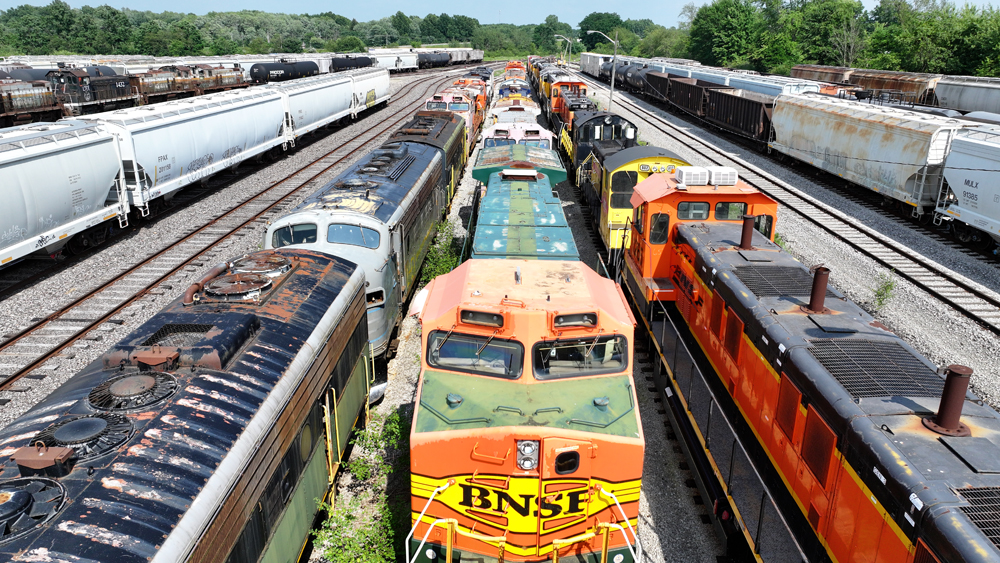
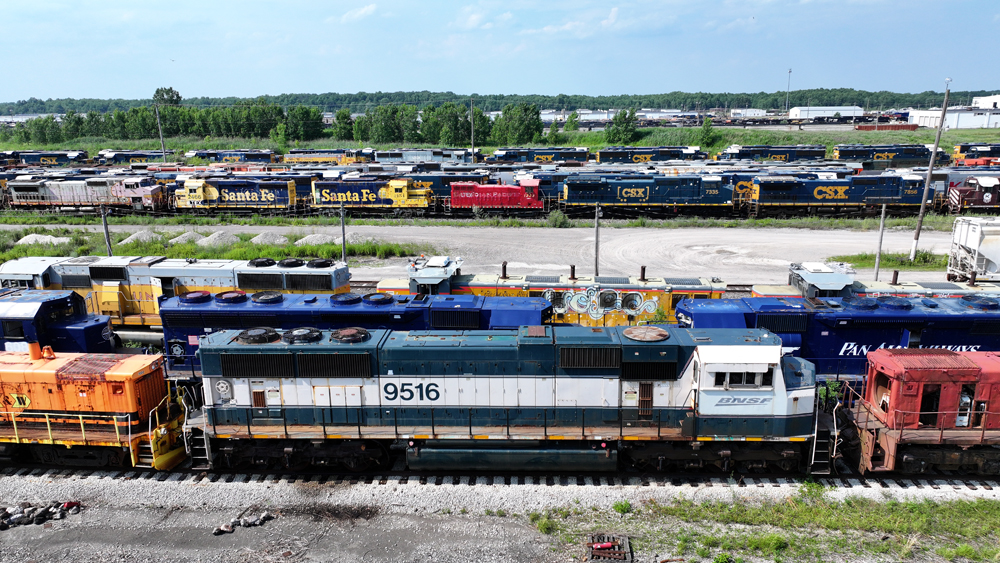
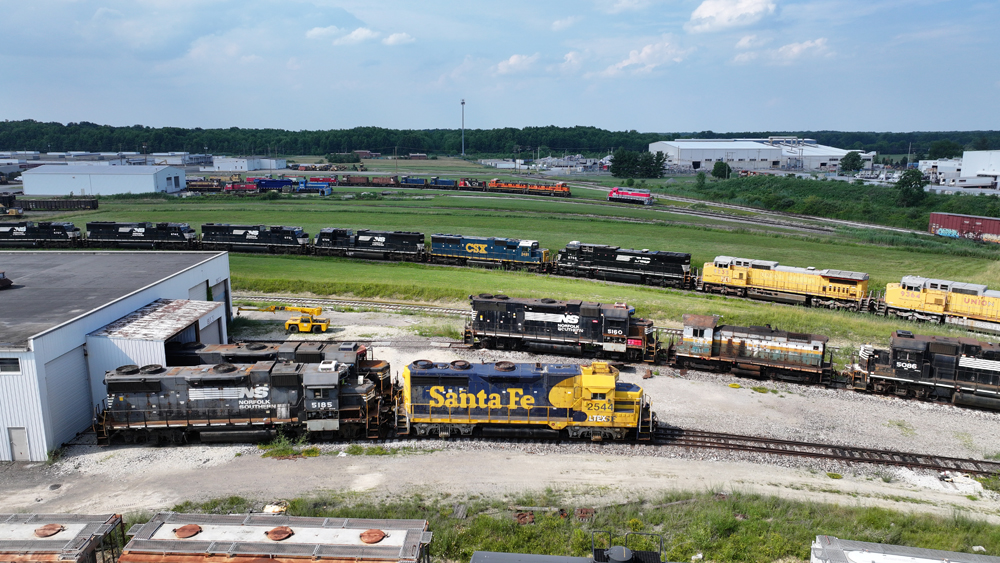
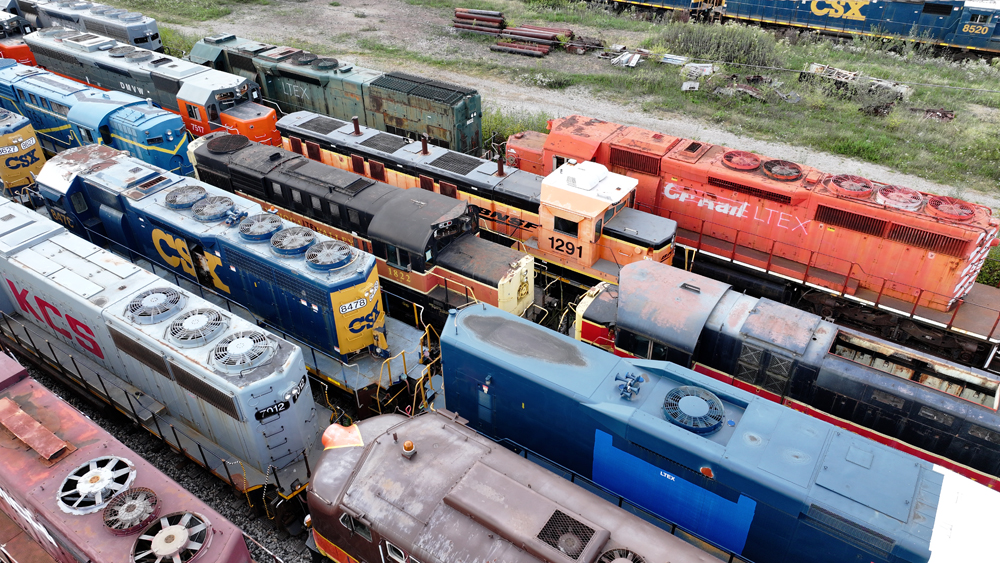

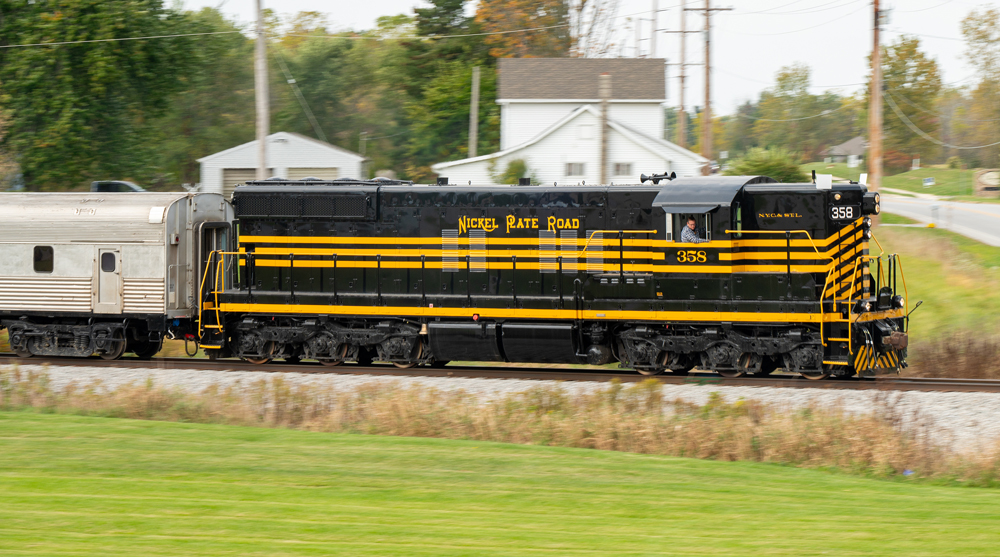
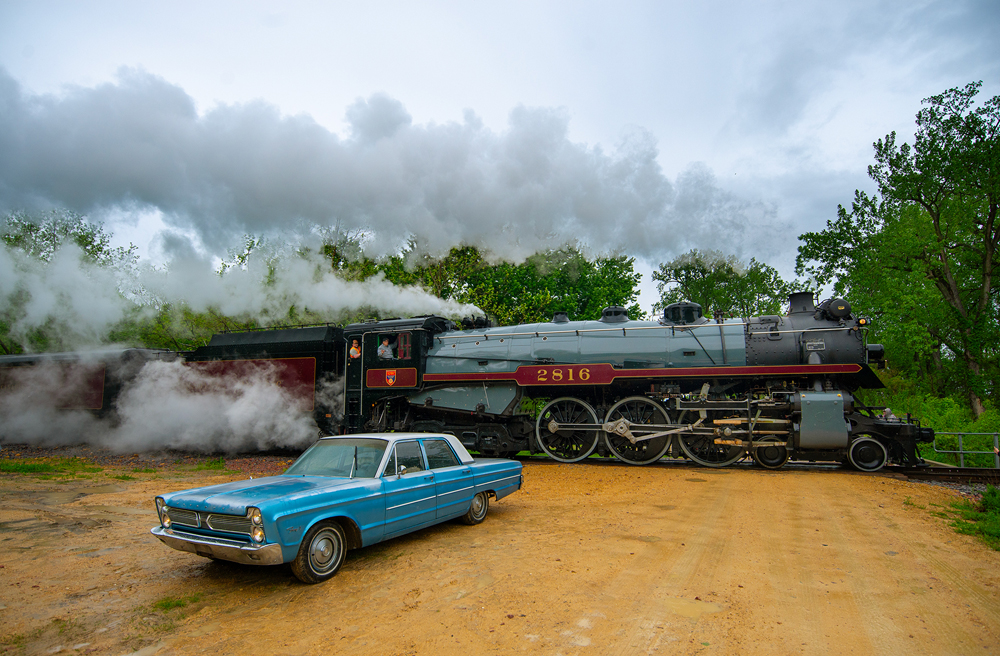
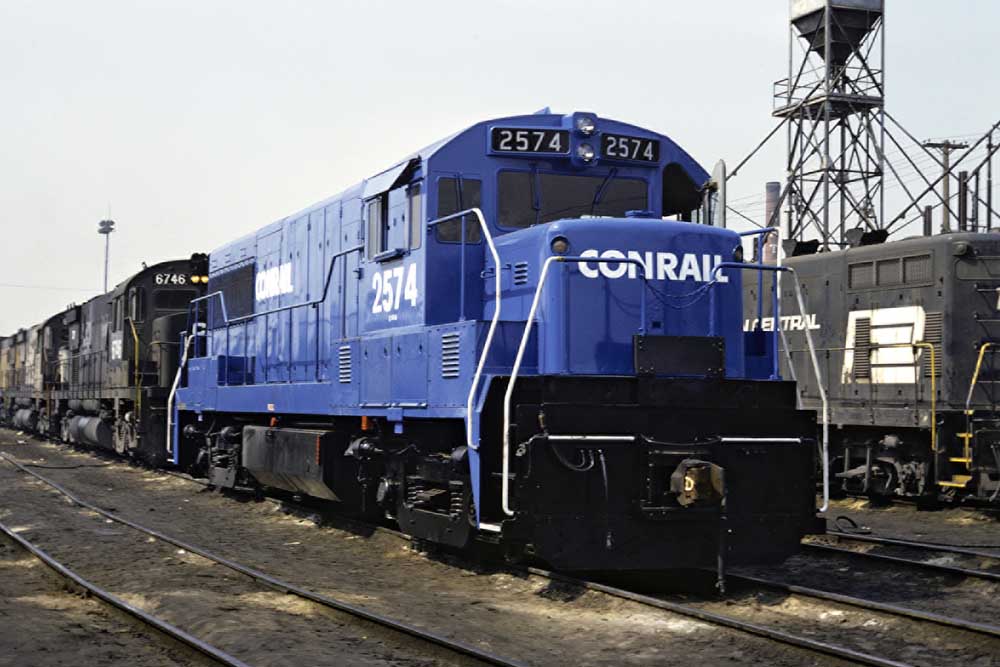
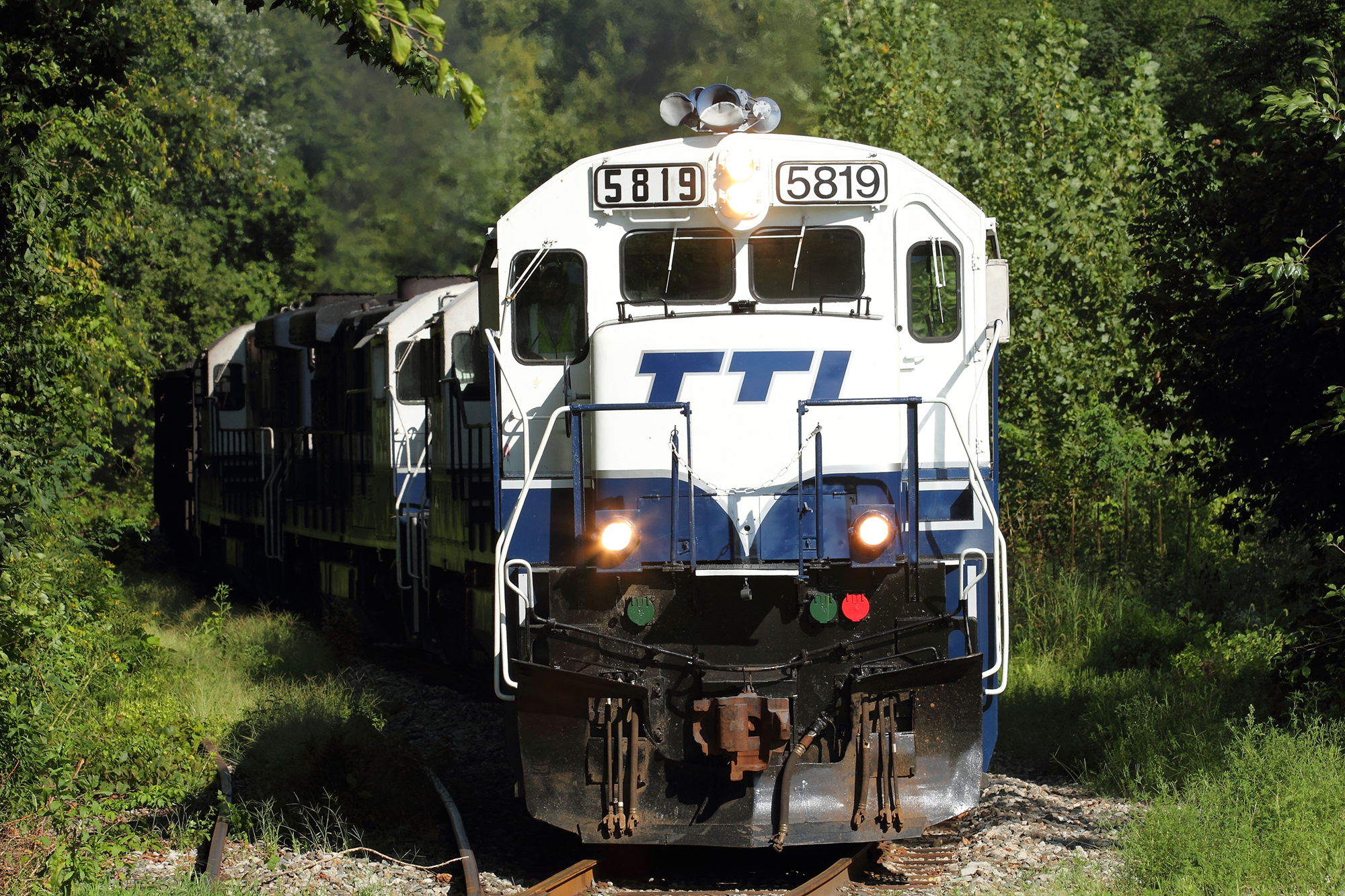




This is Larry’s Truck and Electric this is where locomotives come to die. Some will be rebuilt others will be sold for scrap but that is the life of a locomotive.
A silent existential cry of mortality.
Dr. Güntürk Üstün
These are truly sorrowful railroad scenes!
Dr. Güntürk Üstün
I always got a kick out of seeing Larry’s Truck and Electric when talking about old engines. It is nice to finally put a face to the name. Definitely not what I expected!!!
As for SD50’s….most soldiered on after being retrofitted by their owners….after which they were pretty darn good…
Good story even though it is a bit sad. Their are plenty of video’s on You Tube where drones are flown over large areas of locomotives wasting away their days in dead lines or at rebuilder/scrappers waiting for their next job that never comes. Like everything else in life, they all eventually return to the dust from which they came…
By the way, what was the basic technical reason that Gensets didn’t work. Seemed like a great idea but they just weren’t reliable. Anyone truly know why?
“Overly complex, with multiple prime movers, heavy battery banks, and sophisticated auto-start/stop systems, the hard luck Gensets quickly proved unreliable in day-to-day service.”
Dr. Güntürk Üstün
Over the years some under funded railroad historical groups have accepted obsolete rolling stock for display. Unfortunately, in many instances, they did not think through how they would maintain the equipment.
In at least one instance that I am aware of the donated equipment has turned into a railroad junk yard.
honestly the SD60I’s, SD50’s, and the Dash 8 series locomotives along with the locomotives could have found new homes instead of being scraped
I don’t blame anyone for not wanting an SD50… They were a cluster from the beginning and an example of EMD doing an “Alco”, ie; rushing to production something that hadn’t been thoroughly thought through. In the end, it hurt EMD reputation and goes down as the “Goose that laid the rotten Egg!” It began the downfall of EMD and people turned to GE for a hopefully better product. EMD did turn things around (not as EMD though) but had to learn the hard way that great reputation does not overcome poor customer service or products. Sort of mirrored what their owner, GM was doing at the time and only a government bail out saved their bacon.
Too bad some of these locomotives might have gone to some historical groups for preservation, oh well there is always the need for more razor blades!
Like was mentioned, Preservation is a double edged sword, (or razor blade, lol) especially with the well intended who have the love but do not have the funds to even do a correct cosmetic restoration, and their beloved relic becomes and eyesore or just plain junk. Restoration is not for sissy’s… Sad but true.